by Danny Mucinskas
Think about your current work and the organization or team that you are a part of. Take a moment to ask yourself some of the following questions:
What are my goals? What are my colleagues’ goals? What are the goals of our organization or workplace?
Do my colleagues share my opinions about our shared goals?
How are the goals of our work made visible or tangible?
What can I do to understand and bridge areas where others do not share my own views of our work?
It might be the case that you feel you know your goals well, that common goals are shared and discussed in your organization, and that others around you also subscribe to them. Or, less fortunately, you might feel the opposite.
In a previous blog post (linked), I emphasized the importance of personal and institutional mission statements and the role they can play in answering some of these questions and in guiding work to common purposes. Mission statements can help clarify the goals of individual and shared work and help to guide decisions.
When our team began The Good Project and researched a variety of professions, we looked not only at individuals but at all the constituencies involved in the work (e.g., in education, we spoke to students, teachers, administrators, and parents). In surveying the opinions of the various constituencies, we found two general states among the sectors we studied.
Alignment: The people involved in a workplace or profession share the same goals as one another and have similar views of what constitutes success. Using the dimensions of “good work,” people in aligned workplaces or sectors have common understandings of excellence, of ethical behavior, and of what engages them in the work. This makes it easier for people to do good work with one another. It makes it more likely that quality, enjoyable work will be done together and less likely that ethical breaches will occur.
Misalignment: The people involved in work together do not share similar goals or views about what their work should achieve. This situation can be due to differences of opinions at the individual level or to underlying structural issues. Under such circumstances, it is difficult to agree upon what successful work looks like. People are likely to work at cross-purposes, and “good work” is less likely to be achieved. Workers may feel disconnected from one another, and ethical mistakes can be made.
At the time of our investigation, we observed prototypical examples of aligned and misaligned professional domains.
First, genetics represented an aligned area. The interviewees we spoke to were united in a single common vision of bettering human life through scientific discovery. The common purpose united workers, providing them with a shared sense of excellence and a conviction that the work was serving ethical ends.
Second, and not as happily, journalism was misaligned, especially between constituency groups. Depending upon their role, workers in the field seemed to have different priorities for what journalism was supposed to be or achieve. For example, while editors might have wanted to ensure profitability and involvement of their media outlets with high profile issues, rank-and-file journalists wanted to take part in investigative reporting that interested them, and readers and viewers of news largely just wanted to obtain information quickly and for free.
These two examples serve as models that might apply or relate to numerous workplaces today. Many of our readers come from the education sector, and if we were to guess, we might say that education is likely misaligned as a whole, although there are specific schools and institutions that have been able to help resolve or bring these misalignments together to form something new. For example, Wendy Fischman and Howard Gardner’s new book The Real World of College describes how higher education institutions are today torn between the desires of multiple constituencies (e.g., should colleges be places that prepare students to get jobs, to learn about a topic area in-depth, or to be personally transformed?). The authors make recommendations regarding how colleges today might react to these misalignments via better onboarding processes, for instance.
It is also possible to think about alignment and misalignment through a political lens. At the national level, the federal government of the United States has moved from a period of relative alignment about issues like environmental protection in the 1970s and 1980s and being “tough on crime” in the 1990s to extreme misalignment today about issues including climate change, healthcare, gun control, and abortion. As in workplaces, “good work” politically is easier to achieve when people are aligned. Congress was able to cooperate in the past to pass legislation that was effective. In the present, it is extremely difficult to see a productive path forward, given considerable misalignments in perspectives about the work that the government should be doing.
However, we also believe that misalignment is not a hopeless situation and can result in great creativity. Misalignments about the goals and purposes of work represent an opportunity for those who can to invest in repairing them and to problem-solve with others. If people within a workplace are experiencing misaligned perspectives, it may be time to launch a new program or protocol that will help people find commonality. While in most cases not simple or easy, the benefits of attempting to bridge misalignments will be worth it if doing “good work” becomes easier as a result.
In the end, none of us does our work completely alone without interfacing or at least having an effect on others, and we will all contend with areas of alignment and misalignment in daily practice. It is also likely to be the case that most organizations and fields aren’t completely aligned or misaligned but fall somewhere in the middle, with these two states as opposite ends of a spectrum.
Consider where your workplace falls and how you might wish to open up conversations with others about the purposes of your work and what excellence, ethics, and engagement should look like in your context. It may also be useful to take stock of who the parties or constituencies are that influence your work, taking time to deliberately step back and reflect on where differences in views might cause difficulties or disagreements. For example, certain colleagues might make decisions influenced by personal pressures not experienced by others, or a supervisor might see the work of your organization fulfilling a different purpose than you do.
Below are some resources you might use to explore alignment and misalignment.
A video explaining alignment and misalignment: https://www.youtube.com/watch?v=O4jkCNA48xg&list=PL5sNbw1uznitpzLCwnv49tgumEAh1bcxG
The Good Collaboration Toolkit, a resource that attempts to create better alignment between partners in a collaborative endeavor
“When In Doubt… Make It Excellent,” a dilemma about a teen working at a school newspaper and navigating expectations of others





